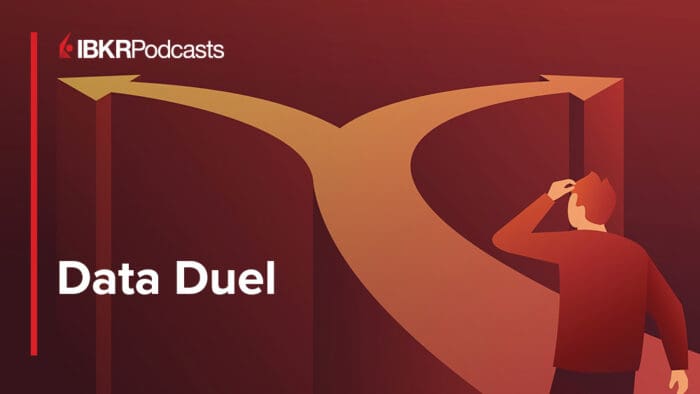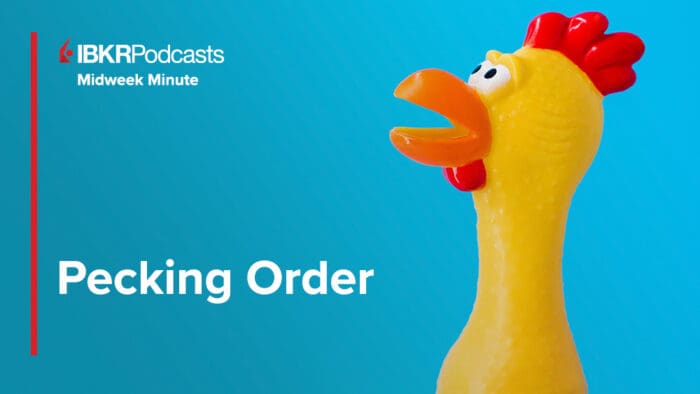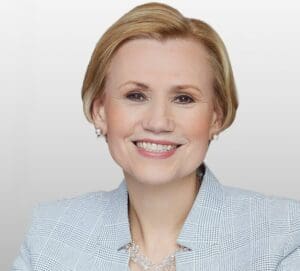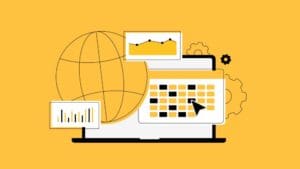Key takeaways
Central bank tightening
Last week saw a flurry of central bank activity, including a surprise announcement and some remarks that were more confusing than clarifying.
Job reports
We got some good news in terms of employment data, but the details indicate that the employment picture isn’t as strong as headlines would suggest.
Debt ceiling
US Treasury Secretary Janet Yellen warned that the US could run out of money to pay its bills by June 1 if Congress does not raise or suspend the debt limit.
Last week was full of news impacting global markets, from central bank tightening to perhaps deceptively strong employment figures to increasing fears about a breach of the US debt ceiling. Let’s dig in.
Central bank tightening continued
Last week saw a flurry of central bank activity, including a surprise announcement and some remarks that were more confusing than clarifying.
- Australia. First, the Reserve Bank of Australia surprised markets with a 25 basis point rate hike and suggested more could come, saying “some further tightening” might be needed to ensure that inflation returns to its target in a “reasonable timeframe.”1 Expectations are that the Reserve Bank of New Zealand will also hikes rates later this month.
- United States. Then, the US Federal Open Market Committee hiked rates by 25 basis points. While the increase was expected, Federal Reserve Chair Jay Powell was somewhat confusing during the press conference. On one hand, he said: “A decision on a pause was not made today.” But on the other hand, he said this about the end of the tightening cycle: “we’re getting close or maybe even there.” He also said: “I think we’ve moved a long way fairly quickly” and that “I think we can afford to look at the data and make a careful assessment.”2 In my view, I believe this is a de facto conditional pause, which means that the bar is higher for the Fed to step in and hike rates again. This in turn means we anticipate elevated market volatility in the near term as there will be even more scrutiny of the data — especially inflation data — going forward. (Read more: A ‘conditional pause’ by the Fed appears to be underway)
- Europe. The European Central Bank (ECB) also hiked rates by 25 basis points. However, ECB President Christine Lagarde made it clear the eurozone is in a different place than the US: “we have more ground to cover and we are not pausing — that’s extremely clear.”3
Strong services/weak manufacturing
In many places around the world, we’ve seen a similar pattern in recent months, and it continued in April: Services activity was strong while manufacturing was tepid.
- United States. The US Institute for Supply Management (ISM) Services Purchasing Managers’ Index (PMI) for April was 51.9, still in expansion. However, US ISM manufacturing PMI was 47.1 for April, well into contraction — although an improvement over March. It’s worth noting the New Orders sub-index for manufacturing is also improving but remains weak.4
- Europe. April Eurozone PMIs also showed a continued disparity between manufacturing and services; manufacturing PMI is in contraction at 45.8 while services PMI is in expansion at 56.2 up from 55.0 in March.5
- China. China’s official PMIs for April showed manufacturing at a surprisingly low 49.2 versus 51.9 for the prior month, while non-manufacturing PMI was 56.4 versus 58.2 in March.6 Similarly, China Caixin manufacturing PMI was 49.5, with services at 56.4.7 The strength of the services sector of the Chinese economy was evidenced by the results of Golden Week. This five-day holiday saw significant strength in domestic tourism revenue; it was at 101% of pre-pandemic levels.8 There is skepticism around whether robust Chinese consumer spending on services is sustainable, but after a multi-year lockdown, I suspect pent-up demand has not been quenched.
Employment remains relatively strong, but details matter
We got some good news in terms of employment data, but the details indicate that the employment picture isn’t as strong as headlines would suggest.
- Canada. Canada’s jobs report for April showed 41,000 net new jobs were created. However, that was driven by part-time jobs.9
- United States. The US jobs report showed that payrolls increased by an impressive 253,000, well above expectations of 185,000. However, there was a significant downward revision to the previous two months of 149,000 payrolls in total.10
Inflation remains elevated, but there are some signs of improvement
- The US jobs report for April indicated that wage growth edged higher. Average hourly earnings clocked in at 4.4% year over year, up from March’s revised 4.3% pace.10 Average hourly earnings in Canada remained high at 5.2% year over year, although that is an improvement from the 5.3% year over year reading for March.9 In addition, a flash estimate of Euro area inflation for April clocked in at 7.0% year over year, up from 6.9% in March.11 The good news is that core inflation was 7.3% year over year, down from 7.5%.11 These are still very elevated numbers and while each data point might not be moving in the right direction, the general trend is downward.
- Some good news came from the New York Fed Survey of Consumers, which showed that one-year ahead inflation expectations moderated in April. Unfortunately, three-year ahead and five-year ahead inflation expects ticked up but, like inflation itself, inflation expectations will be lumpy and imperfect as they follow a general trend downward.12
Credit conditions have tightened
Following the eruption of the mini-banking crisis earlier this year, credit conditions have tightened and are expected to tighten further. The Fed’s Senior Loan Officer Opinion Survey for April indicated that “Banks expect to tighten standards across all loan categories over the rest of 2023, citing an expected deterioration in credit quality and collateral values, a reduction in risk tolerance, and concerns about bank funding costs, liquidity position and deposit outflows as reasons.”13
This is clearly becoming a more difficult environment for lending (although the upside is that tightening credit conditions increase the odds the Fed won’t have to go back on its “conditional pause.” We will of course follow credit conditions closely going forward.
Yellen issues a warning about the US debt ceiling
I have been warning for some time about the potential for the debt ceiling issue to throw a wrench into the economy and markets. Now, markets have become more concerned in recent days. My colleague Brian Levitt pointed out that the rate on the 1-month US Treasury bill has recently surged as investors are less willing to invest in instruments that mature when the debate may be most intense. That should come as no surprise since, last Monday, US Treasury Secretary Janet Yellen warned that the United States could run out of money to pay its bills by June 1 if Congress does not raise or suspend the debt limit. There are many moving parts to this calculation, so we’ll be watching the details closely.
Suffice it to say that the X-date, the date the US will run out of money if the debt ceiling isn’t lifted, could be later than June 1; we will have more color on that as the IRS assesses tax revenues thus far and makes projections on future revenues. There could also be a short-term extension, which could push the X-date to late summer or fall of 2023.
In the short term, this could cause a credit downgrade like the one we saw in 2011 — that event shook markets, sending risk asset prices down and increasing demand for “safe haven” asset classes such as Treasury bonds and gold. And, because the federal government would most likely prioritize the servicing of US debt in the event we reach the X-date without lifting the debt ceiling, that would mean either a delay or temporary cessation in the payment of line items such as Social Security benefits and military salaries — which could cause substantial damage to the US economy. I am hoping for the best but planning for worse; my colleagues, public policy experts Andy Blocker and Jennifer Flitton, believe this could be the most contentious debt ceiling fight yet. We can at least expect heightened market volatility in the face of uncertainty until the debt ceiling is actually lifted.
Fears remain about several different risks
And in other news:
- Concerns about US banking stocks have not fully abated but remain largely confined to regional banks. Their share prices have been under significant pressure for weeks. (Read more: As First Republic falls, it’s decision-time for the Fed)
- Fears of recession have recently increased further, as there are worries aggressive Fed tightening could cause a US recession. The 3-month / 18-month US Treasury yield curve has inverted to a level not seen since 1981.14
- The 2-year / 10-year yield curve inversion has narrowed significantly since the height of the mini-banking crisis in March, although it still remains relatively wide.15 This narrowing has largely been driven by a drop in the 2-year US Treasury yield since early March. Markets are anticipating rate cuts in the not-too-distant future — likely as a result of a deteriorating economy caused by rate hikes, tightening credit conditions and concerns about an inability to increase the debt ceiling in a timely fashion.
- The pandemic is officially over. Last week the World Health Organization declared that COVID-19 is no longer a global pandemic. While the world has for a long while operated as though the pandemic was over, this announcement is the official end of an era. And it’s also a reminder: The issue we perceived to be the greatest risk to the economy and markets at one point in time is no longer, just as today’s biggest risks will one day be in the rearview mirror. This too shall pass.
Looking ahead, I expect the focus to be on inflation readings in the US — especially the Consumer Price Index — which will be released later this week.
With contributions from Paul Jackson, Brian Levitt, Andy Blocker and Jennifer Flitton
Footnotes
- Source: Reuters, “Australia central bank stuns with 25-bps hike, warns more might be needed,” May 2, 2023
- Source: Federal Reserve transcript of Chair Jay Powell’s press conference, May 3, 2023
- Source: European Central Bank transcript of Christine Lagarde press conference, May 4, 2023
- Source: Institute for Supply Management, May 2023
- Source: HCOB Eurozone Manufacturing PMI, May 2, 2023, and HCOB Eurozone Services PMI, May 4, 2023
- Source: National Bureau of Statistics, April 30, 2023
- Source: Caixin Global, May 4, 2023 and May 5, 2023
- Source: South China Morning Post, May 4, 2023
- Source: Statistics Canada, May 5, 2023
- Source: US Employment Situation Report, May 5, 2023
- Source: Eurostat, as of May 2, 2023
- Source: New York Fed Survey of Consumer Expectations, as of May 8, 2023
- Source: The April 2023 Senior Loan Officer Opinion Survey, May 8, 2023
- Source: Bloomberg, as of May 5, 2023
- Source: Bloomberg, as of May 5, 2023
—
Originally Posted May 9, 2023
Global markets digest: Rate hikes, job reports, debt ceiling, and more by Invesco US
Important information
NA2891721
Past performance is not a guarantee of future results.
This does not constitute a recommendation of any investment strategy or product for a particular investor. Investors should consult a financial professional before making any investment decisions.
All investing involves risk, including the risk of loss.
An investment cannot be made directly in an index.
The Federal Open Market Committee (FOMC) is a 12-member committee of the Federal Reserve Board that meets regularly to set monetary policy, including the interest rates that are charged to banks.
Tightening is a monetary policy used by central banks to normalize balance sheets.
A basis point is one hundredth of a percentage point.
Purchasing Managers’ Indexes are based on monthly surveys of companies worldwide, and gauge business conditions within the manufacturing and services sectors.
The New York Fed’s Survey of Consumer Expectations is a nationally representative, Internet-based survey of a rotating panel of approximately 1,300 household heads.
The Federal Reserve’s Senior Loan Officer Opinion Survey is a survey of up to 80 large domestic banks and 24 US branches and agencies of foreign banks.
The yield curve plots interest rates, at a set point in time, of bonds having equal credit quality but differing maturity dates to project future interest rate changes and economic activity. An inverted yield curve is one in which shorter-term bonds have a higher yield than longer-term bonds of the same credit quality. In a normal yield curve, longer-term bonds have a higher yield.
Safe havens are investments that are expected to hold or increase their value in volatile markets.
The Consumer Price Index (CPI) measures change in consumer prices as determined by the US Bureau of Labor Statistics. Core CPI excludes food and energy prices while headline CPI includes them.
Fluctuations in the price of gold and precious metals may affect the profitability of companies in the gold and precious metals sector. Changes in the political or economic conditions of countries where companies in the gold and precious metals sector are located may have a direct effect on the price of gold and precious metals.
The opinions referenced above are those of the author as of May 8, 2023. These comments should not be construed as recommendations, but as an illustration of broader themes. Forward-looking statements are not guarantees of future results. They involve risks, uncertainties and assumptions; there can be no assurance that actual results will not differ materially from expectations.
Disclosure: Invesco US
This does not constitute a recommendation of any investment strategy or product for a particular investor. Investors should consult a financial advisor/financial consultant before making any investment decisions. Invesco does not provide tax advice. The tax information contained herein is general and is not exhaustive by nature. Federal and state tax laws are complex and constantly changing. Investors should always consult their own legal or tax professional for information concerning their individual situation. The opinions expressed are those of the authors, are based on current market conditions and are subject to change without notice. These opinions may differ from those of other Invesco investment professionals.
NOT FDIC INSURED
MAY LOSE VALUE
NO BANK GUARANTEE
All data provided by Invesco unless otherwise noted.
Invesco Distributors, Inc. is the US distributor for Invesco Ltd.’s Retail Products and Collective Trust Funds. Institutional Separate Accounts and Separately Managed Accounts are offered by affiliated investment advisers, which provide investment advisory services and do not sell securities. These firms, like Invesco Distributors, Inc., are indirect, wholly owned subsidiaries of Invesco Ltd.
©2024 Invesco Ltd. All rights reserved.
Disclosure: Interactive Brokers Third Party
Information posted on IBKR Campus that is provided by third-parties does NOT constitute a recommendation that you should contract for the services of that third party. Third-party participants who contribute to IBKR Campus are independent of Interactive Brokers and Interactive Brokers does not make any representations or warranties concerning the services offered, their past or future performance, or the accuracy of the information provided by the third party. Past performance is no guarantee of future results.
This material is from Invesco US and is being posted with its permission. The views expressed in this material are solely those of the author and/or Invesco US and Interactive Brokers is not endorsing or recommending any investment or trading discussed in the material. This material is not and should not be construed as an offer to buy or sell any security. It should not be construed as research or investment advice or a recommendation to buy, sell or hold any security or commodity. This material does not and is not intended to take into account the particular financial conditions, investment objectives or requirements of individual customers. Before acting on this material, you should consider whether it is suitable for your particular circumstances and, as necessary, seek professional advice.




















Join The Conversation
For specific platform feedback and suggestions, please submit it directly to our team using these instructions.
If you have an account-specific question or concern, please reach out to Client Services.
We encourage you to look through our FAQs before posting. Your question may already be covered!